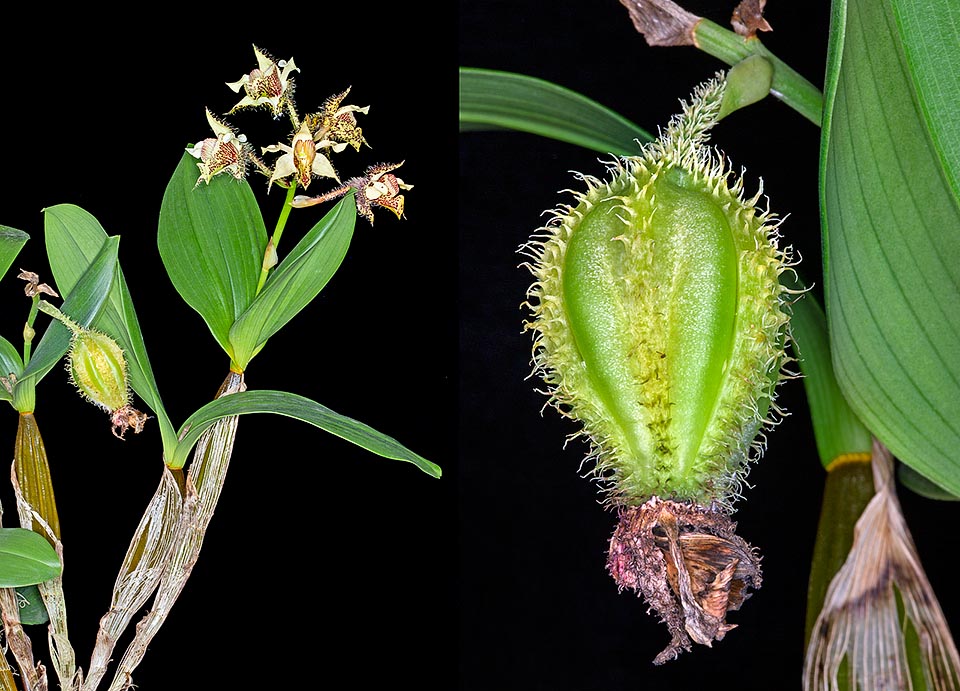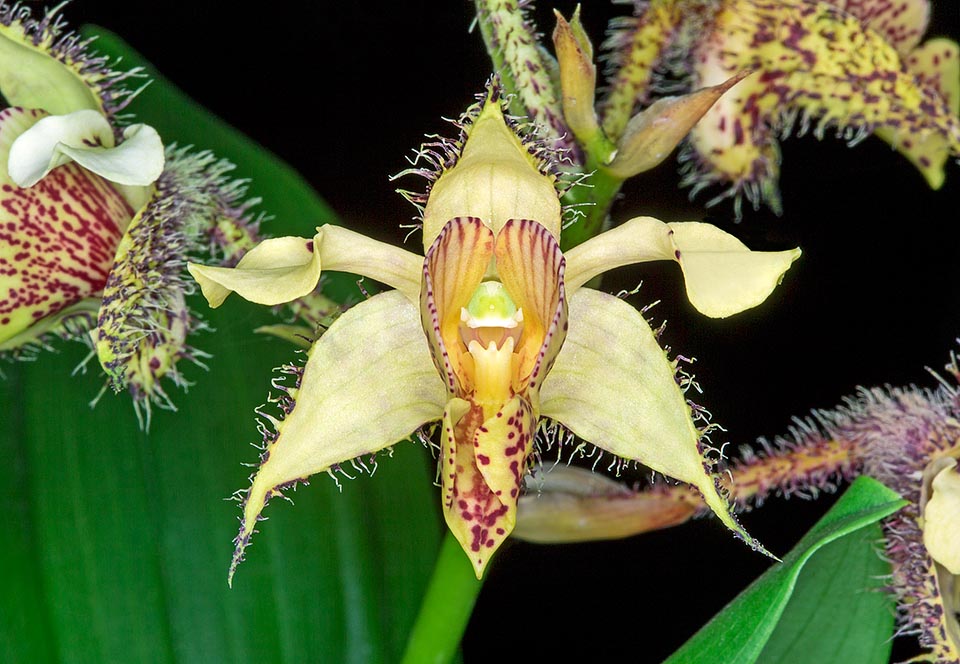Family : Orchidaceae

Text © Pietro Puccio

English translation by Mario Beltramini
The species is native to New Guinea where it grows on the trees of the misty forests between 900 and 2100 m of altitude.
The name of the genus is the combination of the Greek substantives “δένδρον” (dendron) = tree and “βίος” (bios) = life, with reference to the numerous species of the genus living on the trees; the Latin specific name refers to the origin site, the Finisterre Range in north-eastern New Guinea.
Common names: end of the world orchid (Englsh).
The Dendrobium finisterrae Schltr. (1912) is an epiphytic species with close erect pseudobulbs, fusiform, slightly compressed laterally, and longitudinally grooved, 30-50 cm long and of a maximum of 2,5-3 cm diameter, provided at the apex of 2, rarely 3, alternate ovate leaves, with obtuse to acute apex, 17-23 cm long and 7-9 cm broad, of intense green colour, coriaceous.

New Guinea epiphyte, the Dendrobium finisterrae has erect fusiform 30-50 cm pseudobulbs grooved longitudinally. Total and detail of the typical fruit © Giuseppe Mazza
Spatulate petals with apiculate apex (that brusquely narrows in a short tip), about 3 cm long and 1,3 cm broad, trilobed labellum, 3,2 cm long and 2,7 cm broad, with erect lateral lobes on the sides of the column, obtuse, and oblong median lobe with apiculate apex, 1,3 cm long and 2,2 cm broad, provided of three crests at the base, and about 0,3 cm long column.
It reproduces by seed, in vitro, and by division, with each section provided of at least 3-4 pseudobulbs.

The flower, hairy and slightly scented, lasts more than one month. 4-5 cm broad, is borne by an erect racemose inflorescence reaching the 25 cm with 5-10 elements © Giuseppe Mazza
12 °C, and high humidity, 70-85%. Regular waterings, but allowing the substratum to dry up before giving water again, slightly reduced in winter, even if does not have a precise period of rest, utilizing rain water, demineralized or by reverse osmosis. The substratum must be very draining and aerated, thus to allow the root to dry up quickly after every watering, based on medium and large sized fragments of bark. The repottings are to be done when strictly necessary at the vegetative restart.
The species is reported in the appendix II of CITES (species whose trade us internationally ruled).
Synonyms: Dendrobium melanolasium Gilli (1983); Sayeria finisterrae (Schltr.) Rauschert (1983).
→ For general notions about ORCHIDACEAE please click here.
